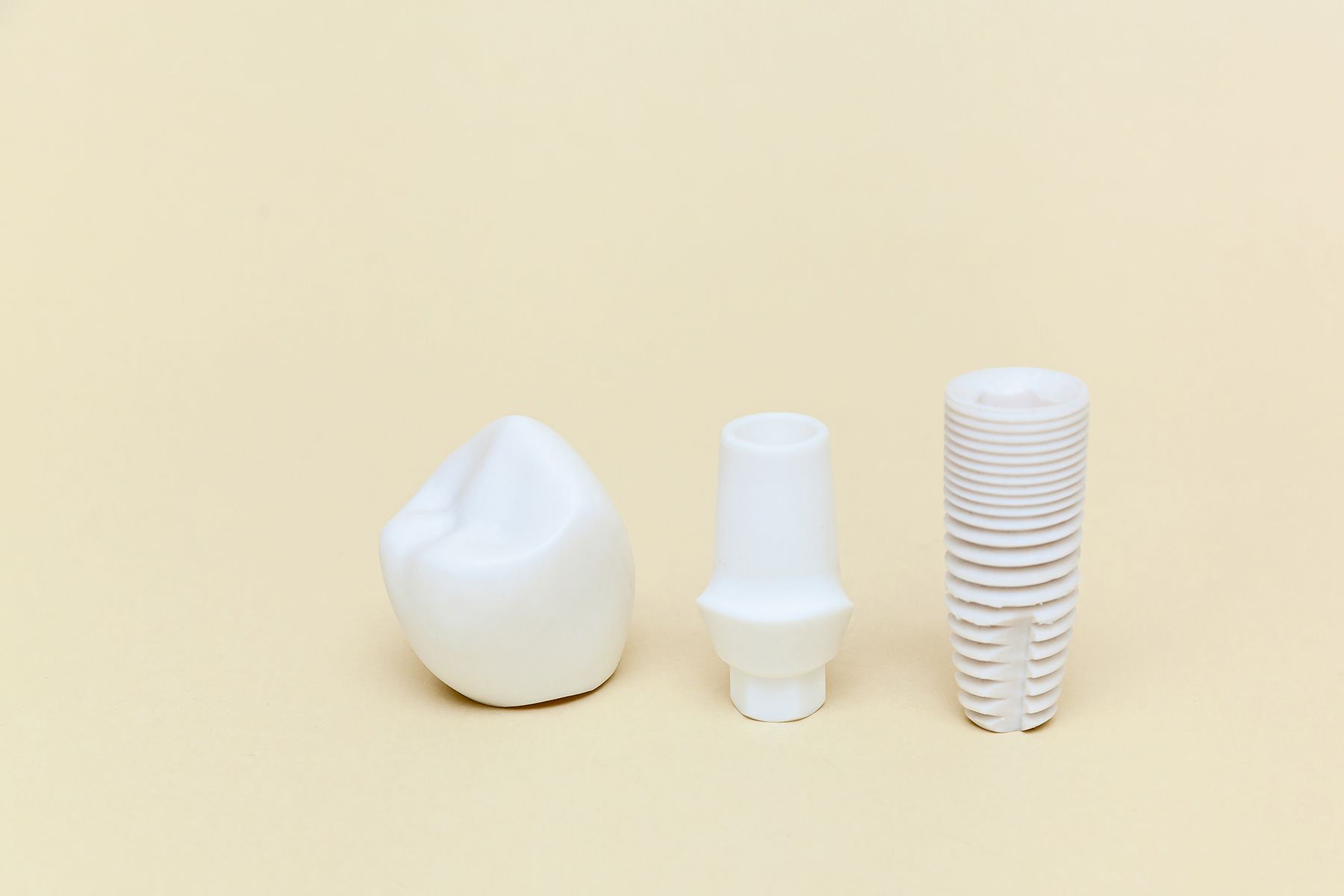Zirconia Implants: What We Know and What We Don’t
Any material choice has pros and cons, and zirconia is no different. Here, we consider physical properties, endurance, and patient preferences.
Zirconia Implants: What We Know and What We Don’t: © EDUARD / STOCK.ADOBE.COM

Zirconia implants have been available in the United States for more than a decade and in Europe for longer. However, clinicians place more titanium alloy implants than zirconia. Why? Consider what we know about zirconia implants and what we do not.
What We Know
They are biocompatible and osseoconductive and can reduce plaque on the implant surface.
The Journal of International Society of Preventive & Community Dentistry concluded that current research on zirconia indicates its biocompatibility with surrounding tissues. Zirconia also showed osseoconductive properties and demonstrated positive interaction with soft tissue. Notably, the literature states the material reduced plaque formation on the implant surface, promoting better healing and successful implant treatment.1 Moreover, recent studies reflect that zirconia osseointegrates as well as or, in some cases, better than titanium, which is partly due to the high level of contact between the implant material and the jawbone.2
They have physical properties that make them attractive for implant dentistry.
Zirconia’s physical properties exhibit good flexural strength, resistance to fracture, a low modulus of elasticity, and low thermal conductivity, which make it desirable for implants.2
They are an excellent material option for some patient segments.
The material is chemically inactive. Persons with metal allergies or sensitivities, or those who want metal-free dentistry in general, may choose a zirconia implant. Some experts say zirconia implants are these patients’ only “viable” option.2 Additionally, because they are not dark like their titanium counterparts, zirconia implants do not result in dark lines around the gingival margin, which is particularly problematic in patients who receive titanium implants and have thin gingival tissue.3
What We Don’t Know
Can zirconia implants last as long as titanium?
Zirconia is a relatively new material for implants, so there is a smaller amount of data about long-term success. By contrast, titanium dental implants have been studied for decades, leading to excellent data about their long-term use.3 However, research is ramping up on the longevity of zirconia implants. A 2020 study suggests clinicians are placing more zirconia implants because there is an increase documented in about 180% of the studies published from 2015 to 2020, and those studies reveal a survival rate of 87% to 100% at 7.8 years.4 By contrast, titanium implants have a 96.4% survival rate after 10 years.5 Time (and more clinical studies) will tell whether the same is true for zirconia implants.
Do 1-piece zirconia implants perform better than 2-piece?
Most early studies on zirconia implants analyzed the survival and failure rates of 1-piece zirconia implants, not 2-piece. Therefore, many clinicians might be reluctant to take their chances on a 2-piece zirconia implant without more evidence of their survival (or failure) rates.2 A 2022 study from the International Journal of Implant Dentistry said that 1-piece zirconia implants were a “valid and ready-to-use” type. Still, clinicians should only recommend 2-piece zirconia implants after informing the patient of a lack of long-term success data.6
However, 1-piece abutments have limitations, primarily the reduction of angulation options, which can interfere with osseointegration and stability7 and the mechanical properties of the materials.2 The lack of studies on 2-piece implants does little to answer the question as to whether they might perform better.
More research is publishing. A 2022 Clinical Oral Implants Research study suggests that a 2-piece zirconia implant had high survival rates for single teeth in posterior jaws.8
Could mechanical properties degrade as zirconia implants age?
Low-temperature degradation (LTD) is a problem for ceramics. LTD occurs in the presence of moisture, hydrogen, and water on stabilized ceramics, resulting in loss of strength and the ceramic’s other beneficial advantages.9 Zirconia is affected by LTD, and more research is needed to understand LTD’s effect on strength, density, and toughness as well as the long-term survival rates of zirconia implants.2
Would a combination of titanium and zirconia be a better material choice than one or the other?
A 2022 systematic review in Dentistry Journal (Basel) suggests that although titanium, zirconia, and titanium-zirconia implants all had a similar performance for tissue response and behavior, the combination of titanium and zirconia did better than either the titanium or zirconia implants for survival rates, marginal bone loss, and bleeding on probing.5 Does that mean combining the strengths of both materials is the next step here? More research will tell.
Will patients prefer them?
Clinical investigations are needed to determine patient satisfaction with zirconia implants. Right now, there is not enough evidence to say whether individuals like them better. However, patients are learning more about them, so current literature suggests that being prepared to meet the demand is not bad for clinicians.10
After years of being on the market, we know that zirconia implants are making a place for themselves along the “gold standard” of their titanium implant counterparts with their material properties, inert nature, and esthetic outcomes. As the materials and zirconia implant systems improve, research continues, and more patients choose them for their implant dentistry, we will get more answers about their long-term success and the formula for the right balance for the materials and implant system design.